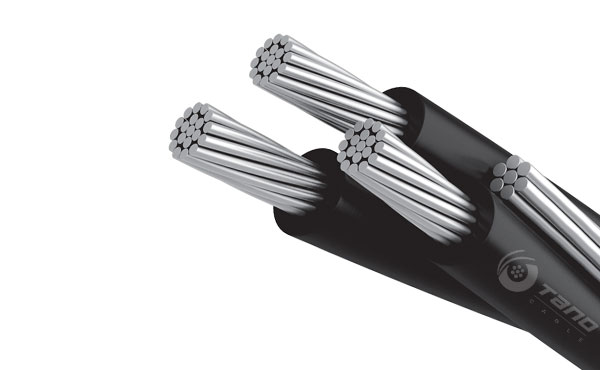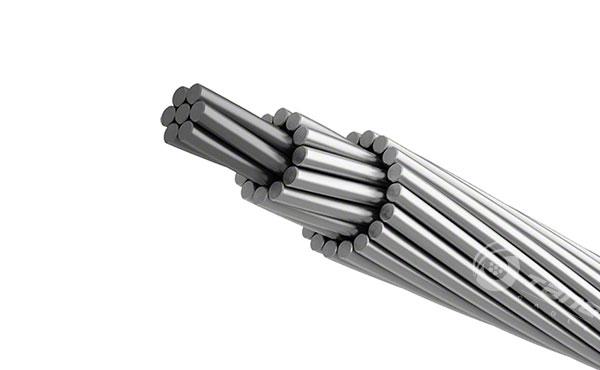Overhead aerial cable is an overhead cable and it is exposed to the air for a long time. The main characteristic of all aerial cables is that they usually run above ground.
For example, indoor overhead power cables may run through pipes installed on stucco ceilings and roofs.
They also apply in running for miles from pole to pole. In winter, these cables are often covered by frost and snow, making them heavier than they were designed for. So, the weight of cables is also a key factor.

Aerial Cable Connection
Aerial cable connection can connect long-distance overhead cables and wire end treatment. It is the sign and end of the wire, and it is also used for antenna protection and insulation protection.
It has many kinds of materials, among which metal cable joints and nylon cable joints are very common. Aerial cable connection maintains stable transmission of power and also ensures safety.
Therefore, it is crucial to choose the right connection when installing overhead aerial cables.
Nowadays, the most common aerial cable connection on the market are copper, stainless steel, and nylon. Due to the difference in the environment, the choice of aerial cable connection varies.
Meanwhile, it is necessary to consider the waterproofing of aerial cable connections.
How to Choose Overhead Aerial Cables
By comparison, copper cables are much heavier than aluminum cables in the same size and dimension.
The weight of conduit (such as lead or tin pipes) and the weight of the cables themselves can add unbearable loads to the ceiling structure. Since aluminum is a lighter metal, it is ideal for this type of indoor power cable application.
The following factors are worth considering:
Environmental Exposure
Tensile Strength
Conductivity
Weight
Copper has long been the standard for power cables. But aluminum power cables are replacing it rapidly as the first choice.

Copper Cables & Aluminum Cables
Aerial power cable manufacturers typically use copper to produce their cables. They choose copper because it is exceptionally malleable and conductive. However, manufacturers often overlook wight, that is to say, aluminum is much lighter than copper.
For example, a 16mm aluminum cable is lighter than a copper cable of the same length. This is why many aerial wiring projects are now turning to aluminum as the first choice.
The secret has less to do with fabrication techniques and more with the weight properties of the two metals. Therefore, the use of aluminum to make overhead power cables have good compactness.
Different Types of Aerial Cables
ACSR (Aluminum Conductor Steel Reinforced)
ACSR has two types including solid and stranded ones. It is suitable for various high-voltage line transmission and suitable for a variety of graphical places. There is a stranded steel core in it and the outer layer is surrounded by a stranded aluminum core. Because of its intensity, it can be used for complex terrains such as rivers and valleys. Thus, it has a wide range of applications.
ACCC Conductor Cable (Aluminum Conductor Composite Core Cable)
ACCC is a new type of cable developed according to the traditional ACSR. It is lightweight, resistant to pressure, heat and corrosion. It can be used in seaside, environment with strong corrosives and high pollution index.
Where to Buy Aerial Cables
Purchase of Aerial Cables
The wire and cable industry is a typical manufacturing industry. The price of raw materials accounts for 70% to 80%. Therefore, the quality of raw materials greatly affects the quality of wire and cable products. Some companies can provide low-cost products.
However, the product quality is very poor. Also, to a large extent, the fluctuation of raw materials determines the price of wires and cables. ZMS cables can meet the standards of overhead cables from the quality control of the whole process of production, transportation, sales, etc.
The performance indicators of the company's fire-resistant wires and cables are in line with the requirements of the International Electrotechnical Commission and national standards, and have been well received and recognized.
Key Factors of Purchase
Environmental conditions, including humidity, heat, acidity, pressure --all of which can affect cable performance. Last but not least, the price of aerial cables plays a very important role when purchasing cables and wires.
However, when you start purchasing for cable inventory, do not make pricing the main deciding factor. While price is very important, a "cheap" cable that doesn't meet many of the other specs listed above may not be a good choice.
Choose your overhead cable supplier carefully. Because these wires and cables support highly sensitive and mission-critical applications, purchasing inventory from relatively unknown suppliers can jeopardize your project.